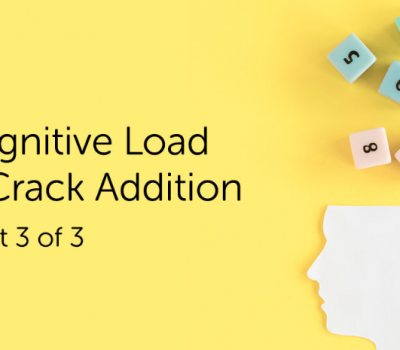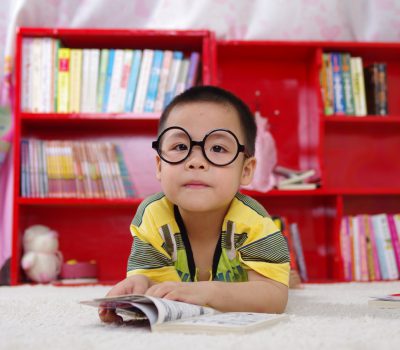

In this, the first in a series of blogs from Suzanne, she shares theories about how memory works and how it’s useful to connect with these ideas to start to be curious. Also, how can your students be better supported to remember?

I wanted to write a series of pieces on how to teach so that ALL children remember. The children I teach are often the ones who have given up on themselves (and their memories), they become passive onlookers and may feel that education is for others but not for them.
In this, the first piece, I want to share some theories about how memory works. It’s useful to connect with these ideas and to start to be curious, how can your students be better supported to remember?
The main approach I and other specialist teachers take is to make learning multi-sensory, this means engaging many senses simultaneously. I feel the sense of touch is one of the MOST important, why?
The importance of touch:
Somatosensory Cortex

The fingertips…contain about 100 times more receptors per square centimetre than the skin on the back…more CNS neurons must be devoted to receiving fingertip sensations…the cortical area that receives input from the fingertips is huge compared to the area that receives input from skin on the back.
The first thing to note is that memory is clearly dependent on whether the student is focusing and attending in the first place. Are they comfortable, and interested, do they feel safe? This also involves the senses, we have seven in all which includes vestibular (balance/movement) and proprioception (knowing where the body is in space). See information about Sensory Processing here:
Working Memory has been big news in education for some time – the gateway to the Holy Grail: Long Term Memory. Working Memory is where information is held temporarily, the information may get lost or drop too readily out of this area.
How to keep it in so that it gets transferred to Long Term Memory?
‘Working memory limitations may be critical only when acquiring novel information based on culturally important knowledge that we have not specifically evolved to acquire. Cultural knowledge is known as biologically secondary information. Working memory limitations may have reduced significance when acquiring novel information that the human brain specifically has evolved to process, known as *biologically primary information. ‘
NB Biologically Primary information is that which is processed by the senses.
More on that here:
Evolutionary Upgrade of Cognitive Load Theory
Effective learning, at least at Primary School level, is really about memory. Children are required to retain information so that they can steadily build upon those foundations. How can we ensure that ALL children remember and are successful?
‘Biologically primary information’ can be thought of as that which is processed through the senses: what we see, hear, touch, smell. If we want to limit the restrictions of Working Memory, we need to harness the power of primary information in learning!
The Baddeley model of working memory (2000) shows short term memory (STM) as split between visual semantics (Visuospatial sketchpad) and the verbal STM (Phonological loop). These two areas are not directly connected but interact with the episodic buffer, thought to transfer information to the long-term memory. It would appear that in dyslexia, certain information does not get readily stored in the long-term memory (LTM). The phonological loop has 2 components: the phonological store and the articulatory rehearsal mechanism.
Auditory information is held in the store where it rapidly decays. The articulatory mechanism rehearses the information so that the rapid decay is avoided. It also recodes, turning symbols into speech. In dyslexia, this is thought to be impaired, as tested using Nonword Repetition (Roodenrys and Stokes, 2001).
It is not just auditory memory which is an issue but the processing of language, is this new vocabulary, is there lots of abstract language used, how long has the speaker been talking??
Importantly, there is evidence to show that the visuospatial sketchpad is not impaired in dyslexia and may even be a strength (see meta-analysis by Swanson, 2006). This suggests that this can be used to boost confidence and improve outcomes, using areas of
strength to support weaker areas, i.e. Hebb’s law: “Neurons that fire
together wire together”. When taught simultaneously with the strong
one, the weaker modality becomes strengthened. This may bring ‘dual coding’ or ‘visual learners’ to mind.
Gathercole and Packiam Alloway write about using Long Term Memory to boost Working Memory (2008). Personally, I like to use humour and harness autobiographical memory e.g. if teaching a High Frequency Word, I ask the pupil to make up their own mnemonic. For ‘said’, one child made up ‘Sally’s Allotment Is Damp! (he used to help her grow carrots!). Discussion also boosts memory (Reid, 2009).
How might you harness this in learning?
Self-esteem is connected to being a successful and independent learner
(Burden, 2008). Building strong and trusting relationships between teacher and child is an essential prerequisite for accelerated learning (Brooks, 2007: 31).
Give pupils thinking time! Pupils may often say, “I don’t know”, or
“I can’t remember”. Sometimes, they have simply given up on their memory and stop trying. Help them to start to be successful and watch them flourish.
We might conclude from this that the best ‘teaching to remember’ would involve DREAMS:
Dynamic – Movement
Real life (autobiographical) – Be linked to something personal to the child or build on existing schema:
Explicit information (semantics) – Have an element of telling
Achievable – within the student’s grasp (building self-esteem)
Mind’s Eye: this may be using visuals or encouraging them to ‘picture’/visualise something.
Sensory: engage all of the senses.
See also this blog on memory and learning: Memory and learning
References:
Baddeley, A. D. (2000). The episodic buffer: A new component of working memory? Trends in cognitive sciences, 4 (11), 417-423.
Brooks, G., (2007). What works for pupils with literacy difficulties? London: DCSF
Burden, R. (2005). Dyslexia and Self-Concept seeking a dyslexic identity. London: Whurr
Gathercole, S. and Packiam-Alloway, T. (2008): Working Memory and Learning, London: Sage.
Reid, G, (2009) Dyslexia: a Practitioner’s handbook. Chichester: Wiley-Blackwell.
Roodenrys, S. & Stokes, J. (2001). Serial recall and nonword repetition in reading disabled children. Reading and Writing: an interdisciplinary journal, 14, 379-394.
Swanson, H. L. (2006) Working memory and reading disabilities: Both phonological and executive processing deficits are important. In T.P. Alloway & Gathercole, S. E., (Eds). Working memory and neurodevelopmental disorders pp.59-88. Hove: Psychology Press.
Next Time: Coming to our senses: Early Years.
.
You must be logged in to post a comment.
I think this is a very worthwhile exploration by Suzanne, which shows the difficulty of translating academically constructed psychological arguments into practice based action. This is where a teacher’s interactions with and stories about pupils can illustrate, elucidate and adjust theories which have been very slow to acknowledge that much is still unknown. Much of what the psychologist struggles to express is hindered by continuing in the linear mode – taking limited understandings of functional processes and building a ‘logical’ argument. However, an actively functioning brain represents a much more fluid, variable and dynamic picture. The senses in their fully interactive ways of functioning are both primary and secondary. For example memory can also activate the senses as in qualia when we remember our own taste. smell and touch feelings/experiences – poems and books express these intellectually using words and our senses/emotions are embodied as we feel a response to them. A teacher who is aware of the importance of sensory stimulation for children’s cognitive development (which involves much hidden memory) can provide engaging situations and environments and evidence their engagement along with the actual work.
Hi Jennifer, so true – in fact – the sense of smell can be very evocative and is even processed in a similar part of the brain to memory. Nothing transports us to a place in time as much as smell and taste and I think this is called the ‘Madeleine moment’, coined by Proust. My particular interest right now is in the hands!
Thank you for your wonderful and thoughtful comment!